Wrap yourself in wonder with the celestial flowers of autumn.
autumn's floral oracle, finding connection, glimmers and softening with flower love and lore.
Hello, I am so glad you have found your way here… I’m Lyndsay — mother, creative and storyteller with a background in interiors PR.
Step inside Story & Thread., a cosy, layered home where the threads of creativity, interiors and mothering meet. Here, we unearth the stories from the seasons of our lives, with a house & a garden at the heart, and everyday beauty as our guide…
“There is a harmony in autumn, and a lustre in its sky”.
–Percy Bysshe Shelley.
Dearest reader…
How has this October week been for you?
Here in London, we have experienced the full spectrum of autumn — from being doused in swirling, blustery rain, to today’s chalcedony ice blue skies and a chill in the air. Last night too, I spotted a prismatic hint of the aurora borealis in a sky scattered with stars — an unexpected gift of late night beauty and wonder through the window…
This week, I announced the first, autumn edition of A Seasonal Salon, an online creative gathering as part of The Beauty Thread. membership, which will take place at 11am GMT on Tuesday 5th November 2024.
Please see more details at the end of this post, I would be so delighted if you were to join us.
Today I am writing to you about the flowers catching my eye (and heart) in these days of early autumn, all of which are united not only by the earth they grow in, but by the celestial in the skies above them too…
The flower oracle — a spread for autumn.
cosmos | aster | dahlia.
connection | glimmers | softening.
October undoubtedly brings a sense of the otherworldly. Heavy lead skies coupled with pockets of low, radiant sunshine provide a dramatic backdrop for a metamorphosing ombre palette. Leaves embark on their annual kaleidoscopic journey — becoming free of the branches that have held them, eventually leaving their shadow imprinted onto the pavement and into the ground.
The garden in October is gleaming with jewels amongst the browning, crumpling, and fading. As I look around the garden, leaves of Boston Ivy are tinged with deep burgundy and blood red, meeting the yellowing leaves of the hibiscus below. Grasses sway and bow, now with bronze florets ruffling softly in the wind. Hydrangeas are patinated and tarnished with time, their flower heads still beautiful despite their age spots and rusted edges.
Cheering calendula in its copper tones are interspersed with papery cosmos and rising mists of asters, or ‘twilight stars’, as they are sometimes known. I am still collecting rain-soaked sweet peas to bring indoors, though less often now, they sit alongside vases of dahlias from the nearby cutting patch.
My triptych of autumn flowers are coincidentally, all from the Asteraceae family, a name derived from an ancient word for ‘star’, given to the flower family for their star-like form. They embody feelings of a deep connection, trust in the glimmers and softening with an underlying sense of spellbinding magic — all qualities I wish to bring into these autumn days…
Messages from autumn flowers…
Cosmos — deepen into relationship with your world.
“The whole cosmos has come together in order to help the flower manifest herself, The flower is full of everything except one thing: a separate self, a separate identity. The flower cannot be by herself alone. The flower has to inter-be with the sunshine, the cloud and everything in the cosmos”.
—Thich Nhat Hanh.
Cosmos, botanical name Cosmos bipinnatus in the family Asteraceae. The cosmos flower gets its name from the Greek word kosmos, meaning ‘world’, ‘order’ or ‘a harmonious arrangement’. It references the neatly ordered petals that represent the perfect arrangement of the universe where everything is interwoven into being.
The cosmos is native to Mexico, but over time the flower has become widespread in other parts of the world. Spanish explorers brought wild species of cosmos back from Mexico to Madrid in 16th century, and the flower found its way to the UK in the late 18th century when the wife of the English Ambassador to Spain brought cosmos seeds home.
Back in Mexico, its celestial connotations deem the flower a sacred bridge between the physical and spiritual realms — a conduit for messages, blessings and prayer. To this day, the cosmos plays a significant role in festivals celebrating the continuity of the cycle of life and death. Alongside marigolds and dahlias, the cosmos adorns altars during Day of the Dead celebrations — an offering to lost loved ones, and a gentle invitation for their spirits to participate in the festivities.
I planted a handful of cosmos ‘Cupcakes’ seeds in early spring-time — diligently watering and watching their fine, feathery foliage emerge from their seed trays; carefully transferring them to larger pots; and tentatively planting them into the warm ground during the summer months.
Since being planted in the earth, and thus coming into relationship with the treasures of the soil, the sunshine and rain, they have bloomed beyond what I imagined possible back in spring. Their delicate foliage takes up space, expanding upwards and outwards, and remains dotted with tightly held buds that slowly open, when they are ready, into perfect saucers, swaying and spinning in the breeze.
The cosmos flower stands as a gentle reminder that everything within the living world is inextricably connected in a state of inter-being, cycles and flow. We cannot exist harmoniously and meaningfully without the support of the ecosystems that surround us, whilst also remembering the unique role we play in them.
The cosmos invites us to release the pressure we place on ourselves, instead allowing our projects and lives to unfold in the context of a wider constellation of connectedness. We are not singular beings, but an expression of the universe’s perfect unfolding — we are not meant to do it all by ourselves but instead in community, with others.
The cosmos seems to be calling me into deeper relationship with my place in the silken web of the world, asking me to notice what nourishes me and allowing myself to be supported.
*Where are you placing pressure on yourself? Where can you lean into support?
Aster - hold onto the glimmers and trust that the light will return.
“I end not far from my going forth
By picking the faded blue
Of the last remaining aster flower
To carry again to you.”
—Robert Frost.
Aster, botanical name Aster amellus in the family Asteraceae. The word aster is derived via Latin from Greek ἀστήρ (aster) meaning ‘star’. Commonly known as the Michaelmas Daisy.
Despite its diminutive form and prevalence, the aster has been draped in significance throughout history — its roots lie deep in the soil and stories of ancient mythology. The flower is closely linked to Astraea, the Greek goddess of justice and innocence, her name meaning ‘star-maiden’ or ‘starry night’ — Astraea is thought to be a bringer of light and hope for humanity. According to the myth, the aster is the earthly manifestation of the stars…
Astraea wept because she could not see any stars on earth — as her tears fell to the earth from the sky, they became star-shaped flowers, known as asters.
Further meaning has been placed on the flower throughout history. Each year, Michaelmas Day is celebrated on 29th September to honour Archangel (or Saint) Michael prevailing over darkness, and the coming of autumn. In many parts of the British Isles, asters are known as Michaelmas daisies as they flower around the time of the festival, bringing much-welcomed light when so much else is fading.
Asters sprang up in my garden last year unexpectedly. I have to admit that I almost pulled out the unidentified, unkempt foliage that was making its way into one of the beds, but something told me that it was more than a weed, that it was in fact sacred.
Clusters of the lilac star-like petals started to appear on the dark green foliage, as if studded across a velvet night sky. Just as its surroundings are beginning to fade, the aster brings a new dream-like yet rooted, experience of colour to that corner of the garden.
The aster assures us that even within times of darkness, there is a place where slivers of hope and light reside unfailingly — a quiet knowing that does not require action but instead that beauty exists all around us. If we look closely enough, it can provide us with sustenance and solace as we step deeper into the darker, colder days that lie ahead.
The aster reminds me of the importance of honouring glimmers of light that somehow becomes even more beautiful at this time of year, as we prepare to hunker down. That we can notice the light, and kindle our own with candles and fire at home. That the light, although less powerful, remains, and will return to strength once again.
*What glimmers do you need to take with you into the darker, colder days ahead?
You can read more about the aster in star light, my guest post as part of the Element Sessions within
’s Beauty & Bone.
Dahlia — soften into the ebb and flow of growth.
“My heart is a garden tired with autumn,
Heaped with bending asters and dahlias heavy and dark”.
Dahlia, botanical name dahlia pinnata, in the family Asteraceae. Named in 1791 by Spanish botanist Antonio José Cavanilles after Swedish botanist Anders Dahl (1751-1789).
Despite only being introduced here in Britain in the late 18th century, like the other autumn flowers I have been drawn to, the dahlia is a flower rich in symbolism and mythology. Alongside the cosmos, it is native to Mexico and although it has only been the country’s national flower since 1963, it has long been a source of nutrition, medicine, ornamental beauty, and even as part of the infrastructure. The dahlia’s name in Nahuatl, the language spoken by the Aztec people, is acocoxochitl, meaning ‘water pipe flower’, as they used hollow Dahlia imperialis (tree dahlia) stems to transport water.
This year was only my second experience of growing dahlias in the garden and it was ever-so slightly more successful than the last, when all plants were enjoyed wholeheartedly by slugs and snails before they really began.
This year, the dahlia tubers planted into pots rather than the ground grew beautifully for a good while. In lieu of prolific dahlia blooming in the garden (there is always next year…!), to get my fullest fix of dahlias, I have returned to the dahlia cutting fields close by. There has been much beauty held within hazy afternoons and under stormy skies, as we gather the sumptuous blooms to bring a sense of the season into our home.
As a dahlia grows, there is a pause and even a slight retraction before the next layer of petals unfolds.
The dahlia represents the pulsation of the universe, as explained by the yogic teaching of spanda that my friend and teacher explores in a recent post. The universe is in a state of spanda, the essential vibration within every living thing, where both expansion and contraction are required. When we sense this pulsation inside us, we are sensing our own experience of that huge, primordial life force — within the rhythm of our heartbeat, the rise and fall of our breath, and the movement of our thoughts.
The dahlia reminds me that our path is not linear and to soften into that — in the midst of taking a leap, we must pause and rest into a new state of being — that the back and forth, and the ebb and flow is deeply embedded within life.
*Where do you notice the pulsation in your life? Where can you soften to the back and forth of growth?
You can read more about the dahlia in my flower of the season post from last autumn, Dreaming in dahlias, finding jewels in autumn.
Thank you so much for reading. I would love to know which autumn flower you are drawn to and to chat more in the comments, or of course feel free to send me an email, it is always lovely to hear from you.
A Seasonal Salon, autumn edition.
A Seasonal Salon is an online creative gathering as part of The Beauty Thread. membership — an invitation to anchor and soften into the season, as we create time and space to notice, and take cues from the beauty that surrounds us.
The time spanning the end of October and the beginning of November is a potent and spellbinding portal. It feels like a tender time to gather — to not only move through this mystical passage together, but to engage in the threshold it represents, orienting ourselves fully into the season and actively participating in the slow burn of transformation.
I would be so delighted if you chose to gather around the bonfire with me, where, by weaving together stories, art, folklore and flowers, we will:
reflect on the season so far
make time to notice how the beauty of the season unfolding around us
kindle embers as cues to craft intentions as we move further into the darker part of the year (or of course, lighter in the southern hemisphere)
It is a time to gaze at the sky, as well as to make offerings to the ground in the form of seeds and bulbs, allowing our very deepest intentions to take root. You can upgrade your subscription to join us.




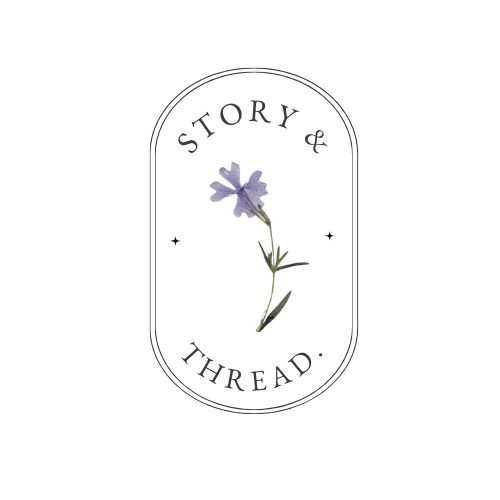
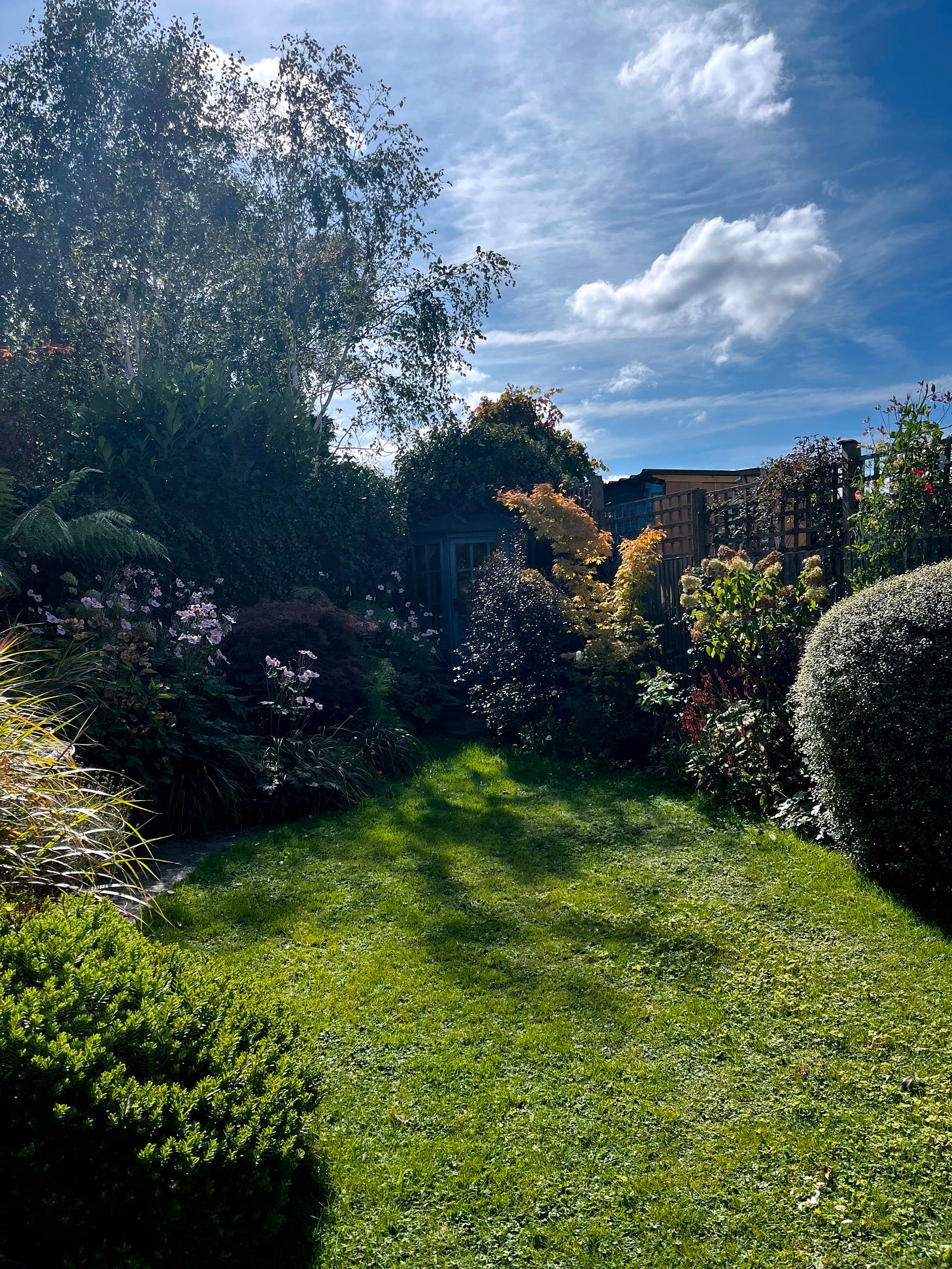
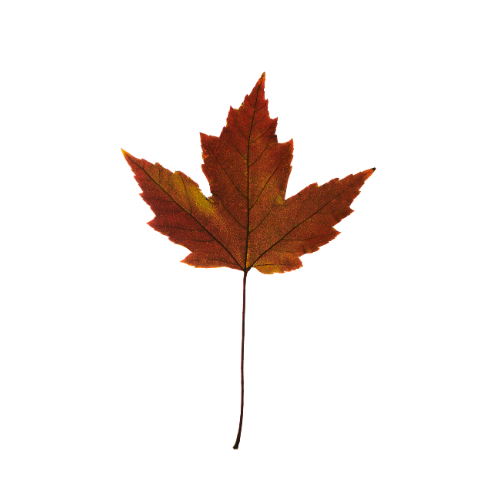
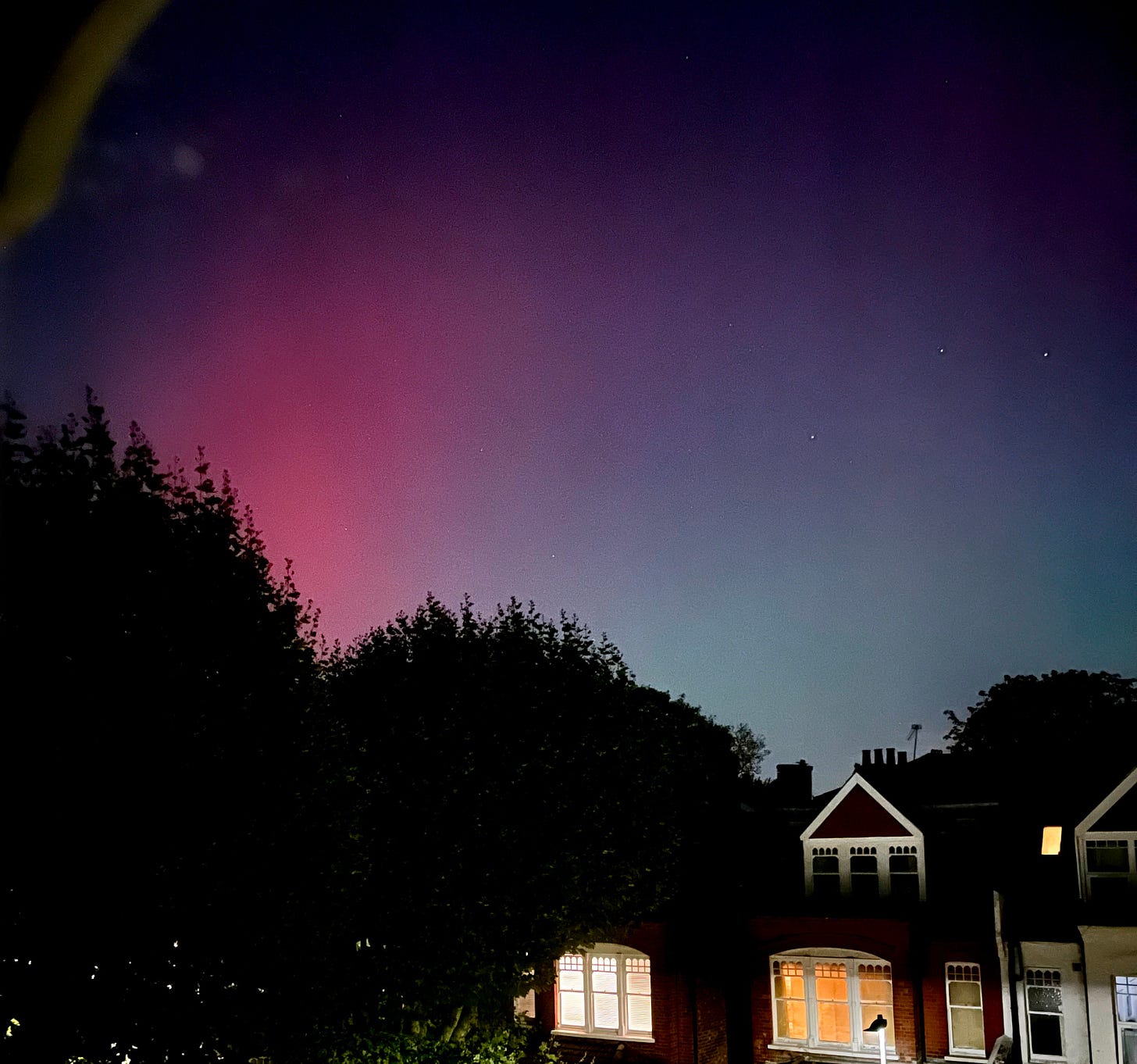


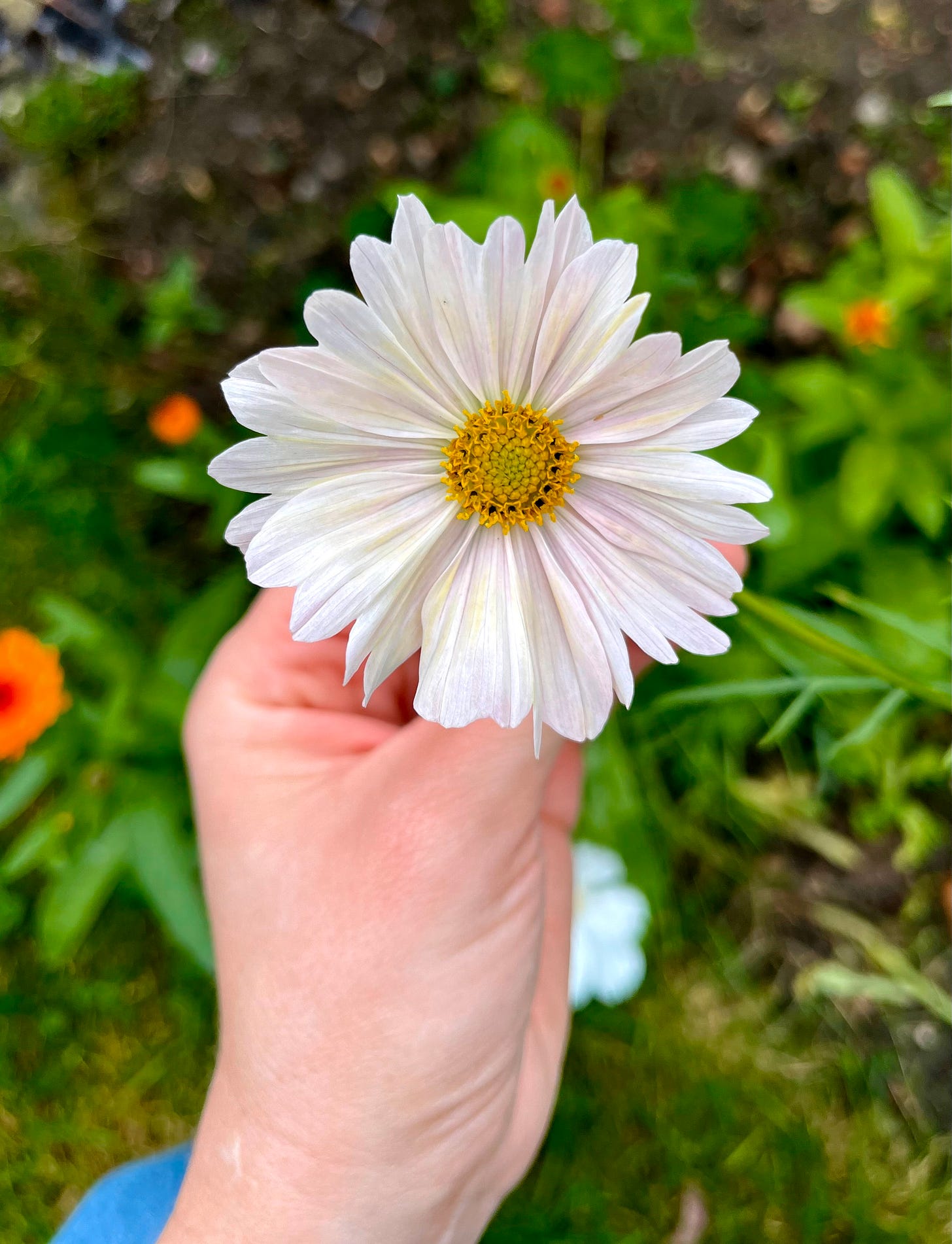


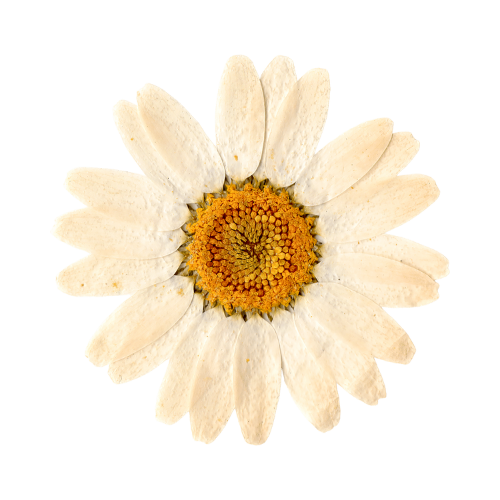
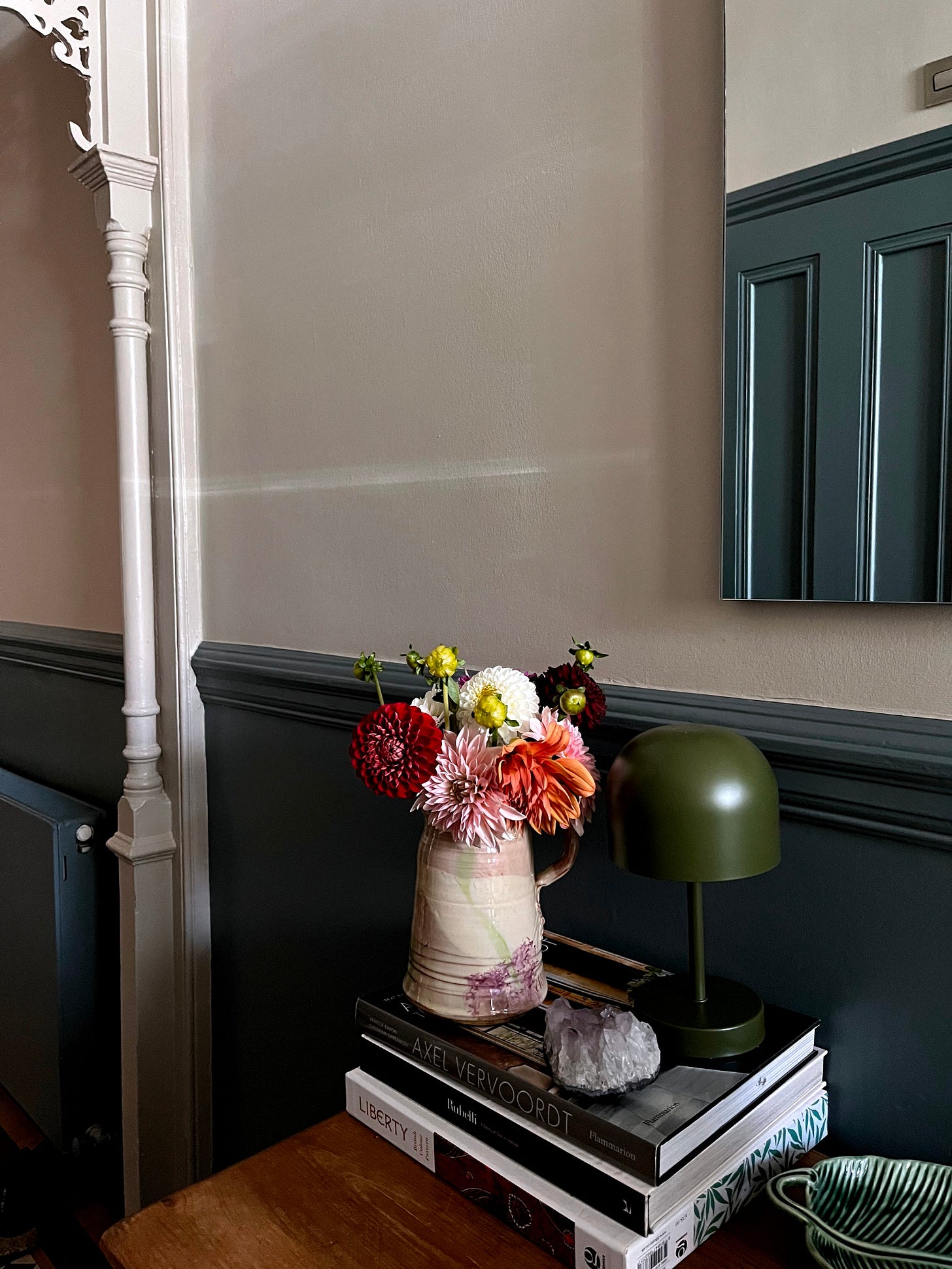


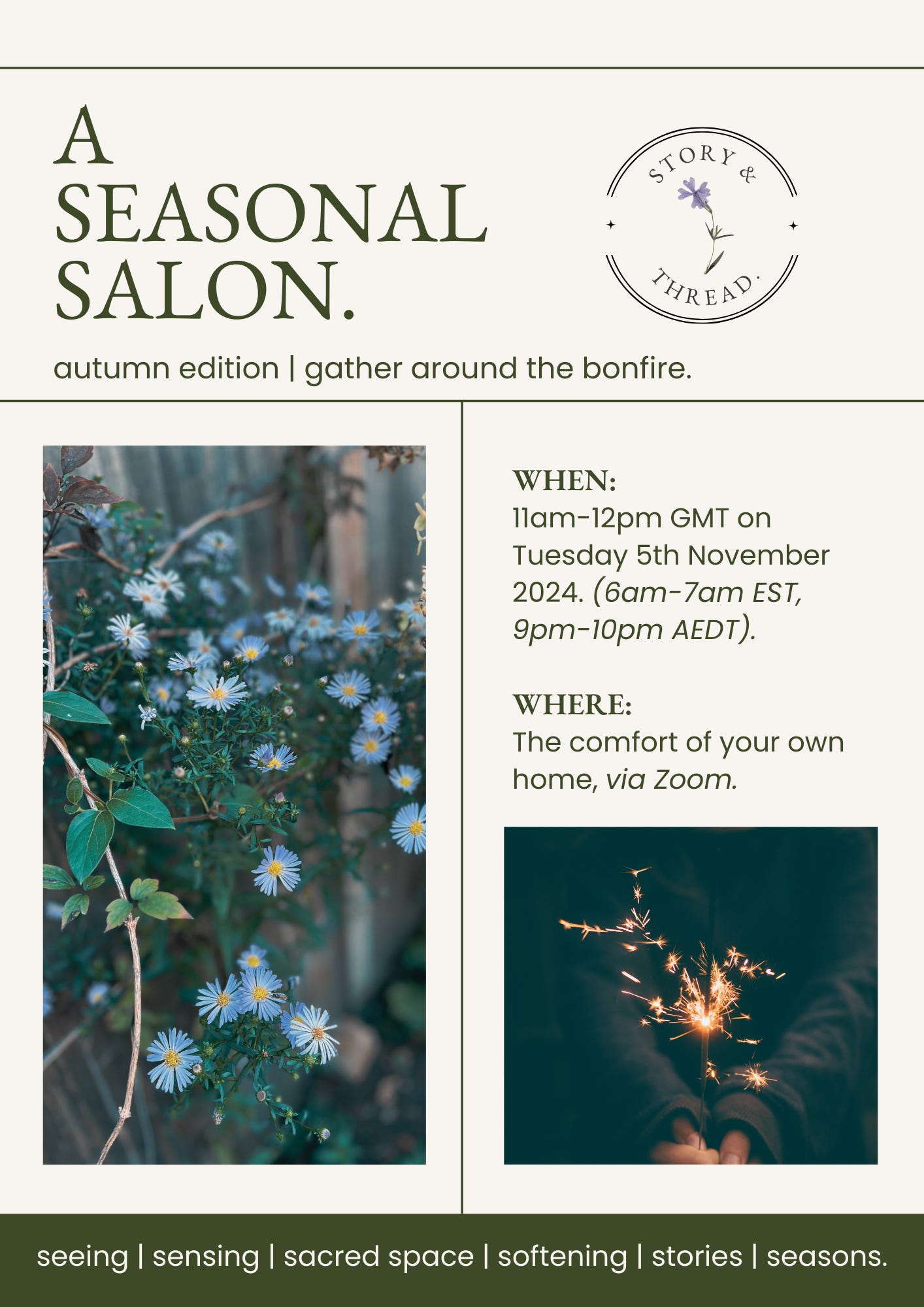
This would all make a very gorgeous oracle deck and book. So whimsical.
Gorgeous, Lyndsay. I most definitely felt drawn into the magic and softness of the dahlia. The pace of the unfolding of dahlias speaks to me, especially in autumn. And I absolutely loved reading a bit more about them, as I’ve only appreciated their colors and beauty from “afar”. And who knew it was named after a Swedish botanist?! Thanks so much for this dreamy post, my friend. Hugs to you. xx